Customer loyalty programs aren’t for your most loyal customers. So who are they for?

The world would be a better place if marketers talked about customer loyalty programs in realistic terms.
We want to believe that customers fall in love with our brands. If you’ve been on the receiving end of any presentation on customer loyalty, you’ve heard the fairy tales so many marketers want to believe are true:
- If you continue to surprise and delight them in small ways, customers will seek out your products no matter the price or placement.
- With the right loyalty program, customers will talk about your brand nonstop to their friends.
- If your brand wants to create customer loyalty, all you need to do is create a community for your product—no matter what that product is.
The truth about customer loyalty programs is much more down-to-earth. Customer loyalty programs don’t create loyalty—they create convenience, which generates more recurring revenue you can count on. If you’re one of the few brands people do rave about, count yourself one of the lucky exceptions—but you’re not the rule.
Stripping away fantasy for reality, brands need customer loyalty programs because the math checks out on them. In 2019, a report by Recur determined that customer acquisition costs (CACs) had risen by more than 60% during the previous 5 years.
Over the next few years, you can expect those costs to increase even more, thanks to continued inflation, Apple’s iOS 17 update, and Google’s long-anticipated Great Cookie Removal in 2024.
The good news is that marketers can reduce their CACs—without the customer loyalty fantasy.
While retention is not the new acquisition, according to Cody Plfoker, CMO at Jones Road Beauty, the two are self-perpetuating mechanisms—and you do need some sort of customer retention strategy to stimulate a reasonable level of word of mouth. The more you can make a profit from your existing customers, the more money you can pour into smart acquisition efforts.
Your most loyal customers are often a small segment of your audience—so it’s essential to find ways to incrementally expand that well.
Your most loyal customers are often a small segment of your audience—so it’s essential to find ways to incrementally expand that well.
Here, we teach you how to move customers beyond their first purchase by using customer loyalty programs that focus on convenience and real value—with a sprinkling of delight for good measure.
Don’t sleep on building customer loyalty: 3 reasons why
Customer loyalty is important because repeat customers are worth more than one-time customers. Here, we break down the nuances of this simple math, which will help you strategize and measure your efforts when creating your own customer loyalty program.
Higher customer lifetime value (CLTV)—and more sustainable growth
Customer lifetime value (CLTV) is the total amount a customer spends with your business. The higher the number, the better your profitability—and potential long-term growth.
In today’s economic climate, it’s no longer acceptable to build businesses that require continuous injections of resources to survive. While you’ll always need to inject capital into acquiring new customers (and you should), customer loyalty programs are a way to build your business’s financial viability through recurring revenue.
Bottom line: Businesses with higher CLTV are more sustainable.
Bottom line: Businesses with higher CLTV are more sustainable.
Lower customer acquisition costs (CACs)
High CLTV offsets high CACs. It’s more expensive to acquire a new customer than to encourage a repeat purchase from someone who already bought from you. Measure your CLTV:CAC ratio to see whether your CLTV is offsetting some of your CAC.
Every business is different, but LoyaltyLion recommends companies aim for a ratio of 3:1, which means your business should be making 3x what you spend acquiring every new customer.
More word of mouth from customers who like you
The best marketing is word of mouth, which comes from your most loyal customers. The more word of mouth you’re generating, the more customers you can acquire, the more customers you can please, and the more customers recommend your product.
Genuine customer referrals are cheap because they’re the ones that come up in natural conversation, when people are talking about how to solve a problem or a great experience they want to share with a friend. Whether those interactions are generated via “true customer loyalty” or not, they’re worth their weight in gold—and putting your energy into stimulating those events is worth your time and resources.
5 popular types of customer loyalty programs you can test out
The most effective customer loyalty programs combine convenience and incentives to give people the most value when purchasing from your brand.
When you’re creating your customer loyalty program, it helps to think about customers who aren’t your loudest champions.
People who truly love your brand would likely buy from you without an incentive. When you’re creating your customer loyalty program, it helps to think about customers who aren’t your loudest champions. Instead, think of the people who like you well enough and are likely to buy again, but need a little push to get there.
With this in mind, here are the 5 most popular types of loyalty programs. Note that they overlap with each other all the time:
1. Point-based loyalty programs
Point-based loyalty programs allow customers to accumulate points from purchases and redeem those points for discounts, freebies, and cash-backs. They’re a low barrier to entry for people who may shop with you out of habit or convenience, or because they have generally pleasant customer experiences with you on the regular.
Points are sometimes the nudge people need to spend just that little bit more to get an item they want from their points. And if enough people repeat that little bit more often enough, you can generate a sizable chunk of revenue to offset CACs.
The simplicity of point-based loyalty programs has a downside—they fail to provide the instant gratification that’s essential for keeping customers engaged. Consider taking a hybrid approach and combining this strategy with another loyalty program type.
For example, athleisure and lingerie brand LIVELY offers a tiered loyalty program that rewards customers with points based on purchases. The system is straightforward and transparent about how many points you need to earn to get a certain amount off your next purchase.

But the brand also nudges customers to earn more points through a tiered loyalty program based on annual spend. Would you spend just a few dollars more to earn double the points and get an annual birthday gift with a purchase? Maybe.

LIVELY takes a data-driven approach and relies on integrations between LoyaltyLion, Klaviyo, and Zendesk for its digital loyalty program. As a result, LIVELY reported a 39% increase in its CLTV and a 36% increase in customer spend.
“Don’t reinvent the wheel if you don’t need to,” says Tabish Bhimani, principal strategist at Mastrat Digital. “Focus on actions and standards customers are familiar with and build on that.”
“Use data about the customer’s points, tiers, and VIP status, and echo that back to them in every campaign and abandon cart email—really encourage them to use those points—using universal blocks,” Bhimani continues. “If you have a point multiplier sale going on, just edit the universal block instead of editing every email.”
2. Tiered loyalty programs
Tiered loyalty programs allow customers to access different levels of benefits based on behavior like purchase volume or order history. Given that 30% of US consumers expect ecommerce brands with customer loyalty programs to offer VIP tiers, it’s worth at least testing how your customers respond to a tiered program—specifically, whether they keep upgrading over time.
Experiential rewards like free shipping and discounts matter, but so does giving feedback and being part of the product development process, so people feel they’re like insiders.
But what’s the secret to an upgrade? Heather DuBois, technology partnerships manager at LoyaltyLion, thinks it boils down to the experiences you’re creating.
“Experiential rewards like free shipping and discounts matter,” she says, “but so does giving feedback and being part of the product development process, so people feel they’re like insiders.”
We’d also add that tiered programs rely on choice and opportunity to upgrade. One person’s reason to upgrade will be different from another’s, so the more choice available, the better.
For example, Biossance’s Clean Crew loyalty program requires a $300 minimum annual spend to upgrade—but it comes with a lot of perks that could offset that cost in the mind of the customer. Free two-day shipping, 10% off all future purchases, and access to monthly events are all incentives that could justify that $300 spend, and the annual spend milestone gamifies the whole process.
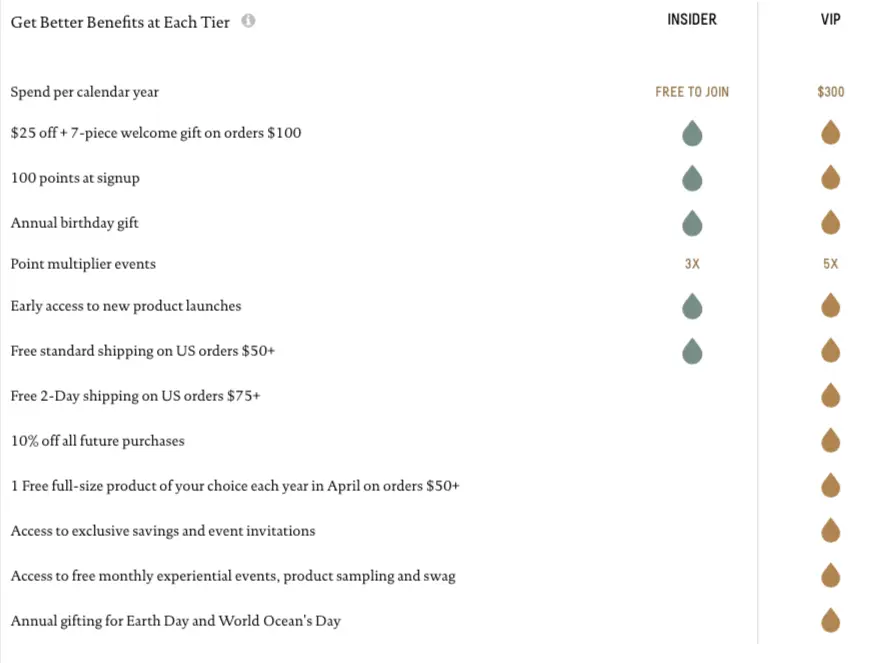
3. Paid loyalty programs
If you can pull it off, a paid loyalty program can generate massive amounts of revenue. First, because you’ve achieved the type of brand status that would justify paid membership, and second, because they’re actually highly profitable.
According to McKinsey, 62% of customers spend more with a brand after joining their paid loyalty program.

4. Partnered loyalty programs
Partnered loyalty programs are born when companies within complementary industries that are not competitors work together to create a loyalty program.
This could look like an airline partnering with a hotel chain, allowing travelers to apply frequent flier miles to their stay, or a coffee shop partnering with a local bookstore to provide discounts on purchases.
5. Gamified loyalty programs
Gamified loyalty programs incentivize actions by turning them into small games or competitions, then awarding benefits upon successful completion. To be successful, gamified loyalty programs need to be, well, fun—just like any other game.
At the very least, these types of loyalty programs should focus on a high exchange of value. The most common thing you want as a brand are reviews, referrals, and social media shares. If you’re asking for this from customers who like you, they need to feel like they’re getting something worth it in return.
Women’s apparel store Pulse Boutique offers 300 points just to create an account in their system, which tells you how valuable Customer-First Data™ is to brands. They also offer points for written reviews, but offer more for reviews that come with a photo.
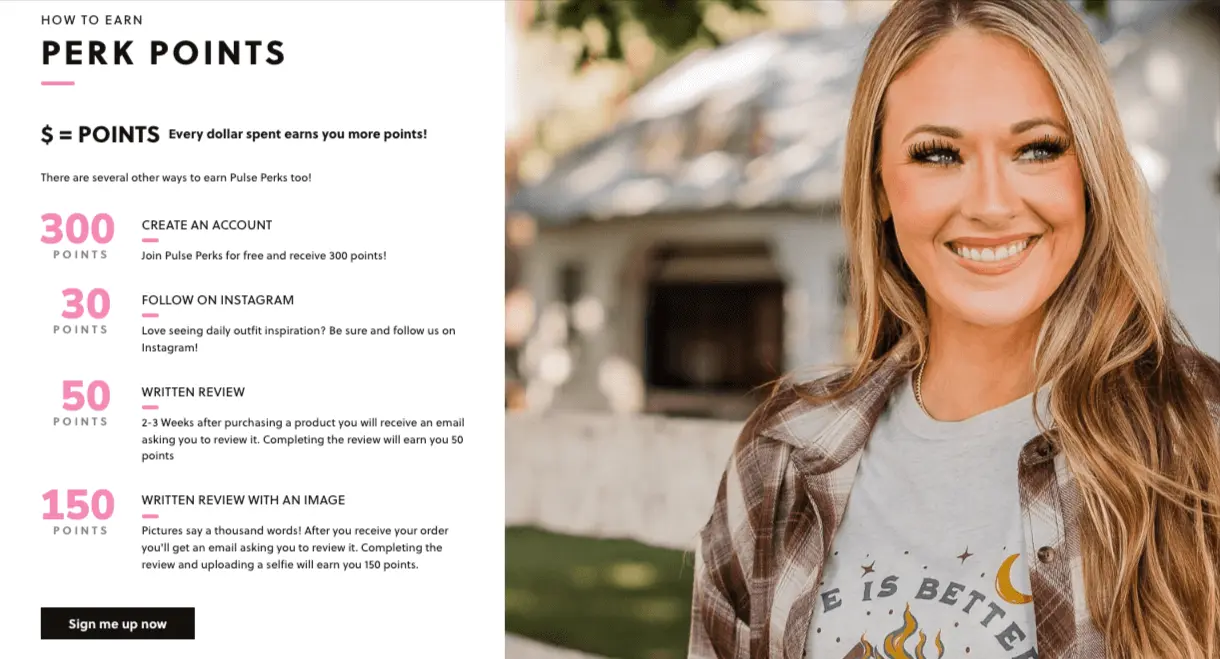
Since launch, the program has delivered a 39% uplift in returning customers and a 19% increase in average order value. Pulse Perks have driven $200K in earned rewards purchases to date.
Build it, then improve it: a step-by-step guide on how to set up a customer loyalty program
If you’ve determined you’re ready for a customer loyalty program, where do you start? If you’re looking to implement or improve your loyalty marketing program, follow these 5 best practices:
1. Use data to decide which customer loyalty program makes sense for your audience
Depending on the products or services your business offers, your unique subscriber and customer cohorts will likely tell you what they value—or at least their data will.
To assess, Ashley Ismailovski, CRO operations manager at SmartSites recommends considering questions like, “Are customers coming back on their own for repeat purchases? Does it make sense with your current marketing strategy to offer incentives for brand loyalty? Are you able to add value to the customer experience through the rewards offered in your program?”
Your customer data will help you understand what keeps people coming back.
As Ismailovski further points out, your customer data will help you understand what keeps people coming back. But if you need a place to start, here’s the latest overall data on why people invest in loyalty programs in the first place:

2. Create a dedicated landing page that explains your program
DuBois stresses the importance of a branded landing page over a simple widget or pop-up on your website for your loyalty program: “Your voice as a brand should come through your customer loyalty page as much as anywhere else.”
REN Skincare’s Clean Rewards page is the cream of the crop if you need an example for how to execute a customer loyalty landing page. With some seriously meaty content, the page tells people who land on it exactly how they’ll be cared for as a loyal customer.
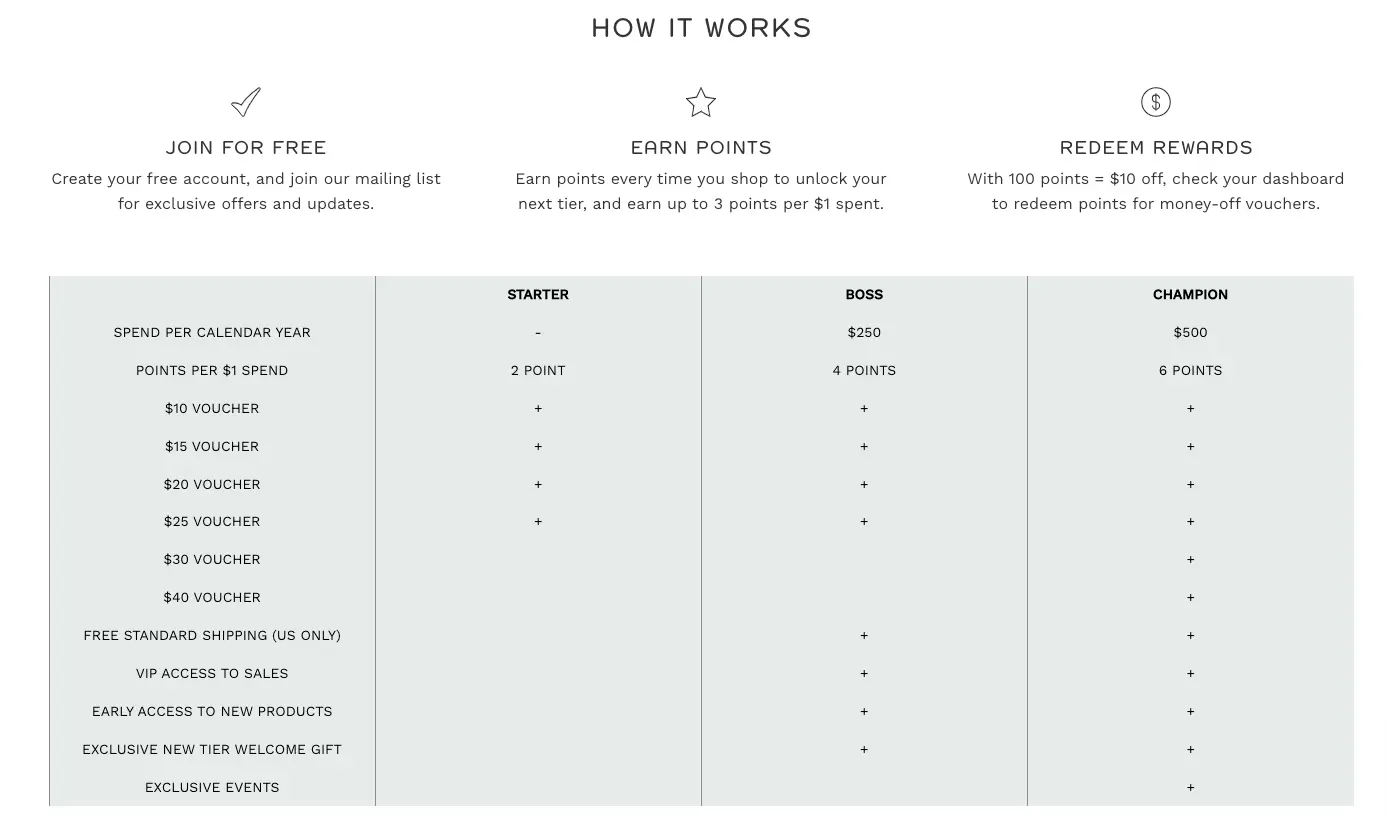
After describing their tiered approach, Ren Skincare breaks down their rewards system into what are essentially game cards, reinforcing the gamification of their points system for each tier.
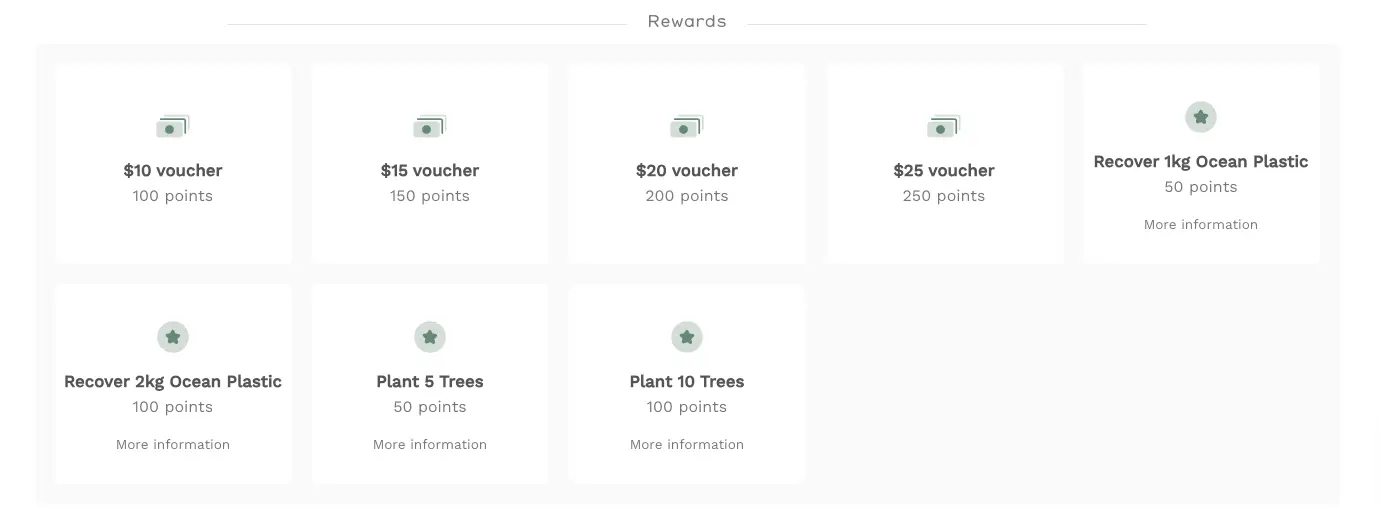
3. Use customer segmentation to personalize communications
Customer segmentation is how you test the viability of a customer loyalty program—and how you continue to make your VIPs feel special.
Segment your most loyal customers from the rest of your owned list and begin rolling out a loyalty program to both groups.
Anyone who’s purchased from you more than 3x in the last year is definitely a VIP.
“Anyone who’s purchased from you more than 3x in the last year is definitely a VIP,” DuBois says. “You can probably assume they’re going to opt in. Send a targeted message letting them know they’ve already qualified to participate at a certain loyalty program level.”
For non-VIPs, “if a customer hasn’t yet subscribed to the loyalty program, showcase the selling points of joining. If they are in a specific tier, emphasize the benefits of that membership and how far they are from being in the next tier to foster greater loyalty,” advises Kate Leske, head of customer success at Nosto.
You can set up customer segments using LoyaltyLion’s insights feature and send personalized emails with Klaviyo to increase open rates.
Targeted discounts and invite-only sales for your most loyal customers are great ways to right off the bat boost conversions through your loyalty program.
4. Automate your loyalty program communication
Loyalty programs run on great communication. The more moving parts your loyalty program has, the more complicated that communication will be.
DuBois notes several customer behaviors within the bounds of a loyalty program that can trigger a corresponding email:
- Completed an action → earned points = personalized thank-you email communicating amount of points earned
- Points expiry date approaching within 90 days = balance notification with a nudge to redeem
- Completed first purchase = bonus points offer if they purchase again within 30 days
- Browsed a clearance product page = double points offer for purchase of the product
- Points hit a certain threshold = points balance reminder
- Monthly points event = dynamic email showing which products they can buy if they redeem points
- Referral link used for purchase = points rewarded email to referrer
With Klaviyo and LoyaltyLion, you can set up an email referral program that generates leads by rewarding loyalty.
“With Klaviyo, LoyaltyLion allows you to target members with the right incentives, and when points are awarded, it’s communicated back to Klaviyo,” DuBois explains. “The platforms work together to continue to incentivize members, and recognize behaviors as they happen.”
The platforms work together to continue to incentivize members, and recognize behaviors as they happen.
Klaviyo’s marketing automation and LoyaltyLion’s unique URL feature can help you drive referrals and increase sales.
5. Use win-back campaigns to improve customer engagement
After customers sign up for your loyalty program, that doesn’t mean your work is done—it’s possible you’ll see some downtime in purchases from them. They might need a nudge in the right direction to re-engage with the program.
A simple email with a monthly update on their loyalty status might do the trick. And if it doesn’t, set up one-off emails with exclusive discounts to re-engage customers who haven’t visited your online store within the last few months.
“Make sure that a customer’s loyalty status is acknowledged and rewarded as they shop, with experiences targeted to them,” Leske advises.
Prove its worth: how to measure customer loyalty to show business impact
“On average, 50% of a company’s revenue is coming from their top 20% of customers,” DuBois says. “If you’re running a tiered VIP program, your top tier will represent around 5% of your customer base.”
On average, 50% of a company’s revenue is coming from their top 20% of customers.
As you begin to roll out your customer loyalty program, you’ll want several ways to measure its success. But before you start measuring customer loyalty in general, you can envision a 20% adoption rate as your North Star metric for any formal program.
Success along the way, DuBois says, “will depend on the channel and how engaged your audience is to begin with.”
If you’re not sure whether your brand is ready for a customer loyalty program and you want some early signs to prepare an argument for your leadership team, here’s where you can start digging for evidence:
Customer lifetime value (CLTV)
Remember, CLTV is what a customer spends with you over the course of their “lifetime” with your brand. To calculate the current CLTV of any given customer, you need to know that customer’s average purchase value, average purchase frequency, and average lifespan with your business.
Use this formula to calculate CLTV:
CLTV = (average purchase value) x (average purchase frequency) x (average customer lifespan)
The higher that number, the better. Most importantly, your high-CLTV customers are your most loyal ones. If you see that a customer’s CLTV is increasing over time, it means they’re becoming more loyal to your business and more likely to participate in a customer loyalty program.
Most important: If you see that your average high-CLTV revenues would exceed the expenditures of setting up a customer loyalty program, that’s your cue that investing would be worth it.
Net promoter score (NPS)
NPS is based on a single question survey: “On a scale of 0 to 10, how likely are you to recommend [brand] to a friend or colleague?”
Based on their responses, customers are categorized into 3 groups:
- Promoters (score 9-10): highly satisfied customers who are likely to recommend your brand
- Passives (score 7-8): satisfied but not enthusiastic customers who are unlikely to actively promote your brand but also unlikely to speak negatively about it
- Detractors (score 0-6): dissatisfied customers who may say negative things about your brand
Use this formula to calculate your NPS score:
NPS score = (percentage of promoters) – (percentage of detractors)
You’ll get a range from -100 to +100, with higher scores indicating a more favorable perception of your brand.
While there isn’t a universally agreed upon NPS score that would indicate your brand is ready for a customer loyalty program, that number should be going up over time. When you start to notice patterns in your favor, it may be time to segment your promoters and push out a test to see if they bite.
Customer loyalty index (CLI)
CLI is similar to NPS, in that it measures the likelihood that a customer will remain loyal to your brand. A common approach to calculating CLI is to use NPS data in a slightly different way:
CLI = (number of promoters – number of detractors) / total number of respondents
The difference between NPS and CLI is that CLI isn’t standardized—you can formulate your own survey questions and assign scores to answers that matter to your business.
But similar to NPS, its power lies in its long-term ability to track trends and the likelihood of customer referrals.
Customer loyalty programs: what’s next?
“Your audience is everything,” says Casey Roeder, founder and CEO of Skylab Media. “When we think about a post-iOS 14 world, brands are allocating greater budgets into loyalty-based campaigns.”
Utilizing platforms like Klaviyo and channels like SMS, Roeder says, “will vastly improve the CLTV of each customer. Messaging needs to be authentic, community-forming, and inspiring. Ensure the incentive is there for customers to keep coming back for more.”
Customer loyalty FAQs
What is customer loyalty?
The standard definition of customer loyalty is consistent brand preference and repeat purchases driven by positive experiences, trust, and customer satisfaction. But the reality is that customer loyalty is a fickle thing that changes with lifestyle, location, and price sensitivity. Life events and income level shift our brand loyalties more than marketing campaigns ever will.
What is a customer loyalty program?
A loyalty program is a customer retention marketing strategy that uses rewards like discounts, early access to new products, or exclusive access to encourage new customers and existing customers alike to continue buying from a brand.
What are the 3 Rs of a loyalty program?
The 3 Rs of a loyalty program are reward, recognition, and retention. Reward loyal customers with incentives, recognize them with personalized offers, and retain them by fostering long-term customer relationships.
How to reward loyal customers?
Reward loyal customers by offering tailored incentives like exclusive discounts, early access to new products, or points they can redeem for future purchases. Customers appreciate personalized rewards based on individual preferences and purchase history, and they take note of expressions of appreciation like thank-you messages or birthday offers.
What is the difference between customer loyalty and customer retention?
Customer loyalty is an emotional attachment to a brand or retailer, which leads people to choose that brand consistently over others. Customer retention is the actual business strategy behind keeping existing customers engaged and preventing them from switching to a competitor.

Related content

Discover how leading brands use Klaviyo to grow subscription businesses. Learn strategies for upselling, personalization, retention flows, and advanced automations that increase lifetime value and reduce churn.
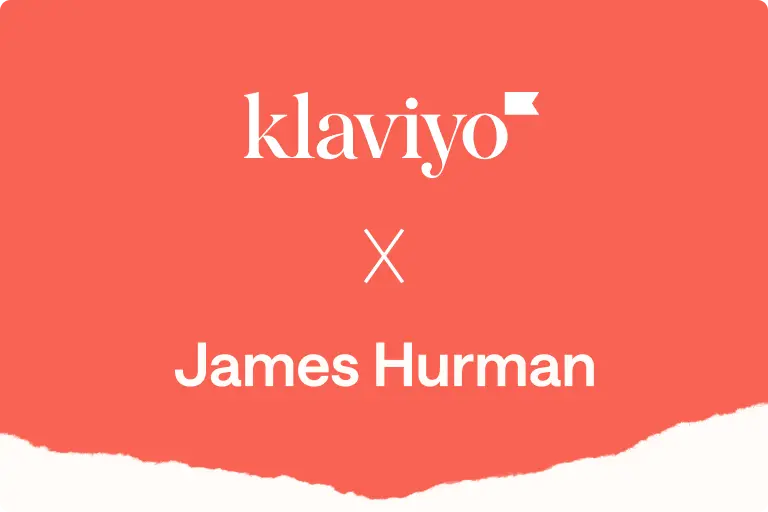
New research shows brands that retain fewer customers—but increase those customers’ spend—are growing at more than 3x the rate of brands that retained more but failed to increase spend.

With potential tariffs creating uncertainty and threatening profit margins, here are 3 ways marketers can use Klaviyo to stay resilient and protect profits in any economy.